Elegant, timeless, and sophisticated are just a few words that come to mind when thinking about French interior design. Known for its impeccable attention to detail, rich history, and lavish charm, French interior design has captivated the world for centuries. In this article, we will delve into the fascinating world of French interior design, exploring its history, key elements, various styles, and tips on how to incorporate this luxurious design aesthetic into your own home.
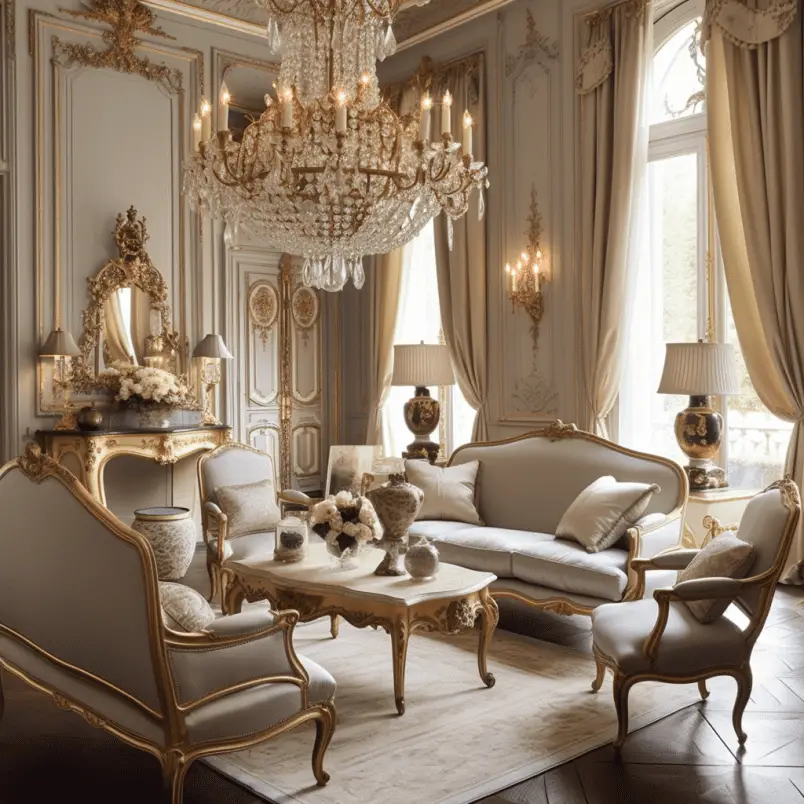
Table of Contents
History of French Interior Design
French Renaissance
The roots of French interior design can be traced back to the French Renaissance in the 16th century. This period saw a surge of artistic and architectural innovation, heavily influenced by the Italian Renaissance. Opulent and intricate designs, with a focus on symmetry and balance, became the hallmark of this period.
French Baroque and Rococo
The 17th and 18th centuries saw the emergence of French Baroque and Rococo styles. Baroque design was characterized by grandeur, opulence, and dramatic contrasts, while Rococo took a more whimsical approach with pastel colors, delicate ornamentation, and a focus on nature.
French Neoclassicism
In response to the excess of Rococo, French Neoclassicism emerged in the late 18th century. This style was marked by a return to classical Greek and Roman principles, with an emphasis on simplicity, order, and symmetry.
French Empire
The French Empire style, which dominated the early 19th century, was inspired by the grandeur of ancient empires, particularly Napoleon’s. Ornate furnishings, rich textiles, and bold color palettes defined this period.
French Romanticism and Eclecticism
The mid-19th century brought about a shift towards Romanticism and Eclecticism, with an emphasis on personal expression, emotion, and a mix of various styles.
French Art Nouveau and Art Deco
The early 20th century saw the rise of French Art Nouveau and Art Deco, characterized by organic forms, geometric patterns, and a focus on craftsmanship and modern materials.
Key Elements of French Interior Design
Color Palette
A typical French interior color palette features a mix of soft, muted tones, such as creams, beiges, and grays, combined with bold accents like gold, deep blues, or rich reds. This elegant blend creates a sophisticated and timeless atmosphere.

Texture and Pattern
Texture and pattern play a significant role in French design. Intricate wallpapers, luxurious fabrics, and ornate rugs add depth and interest to a space. Floral and toile patterns, as well as intricate motifs inspired by nature and history, are also popular.
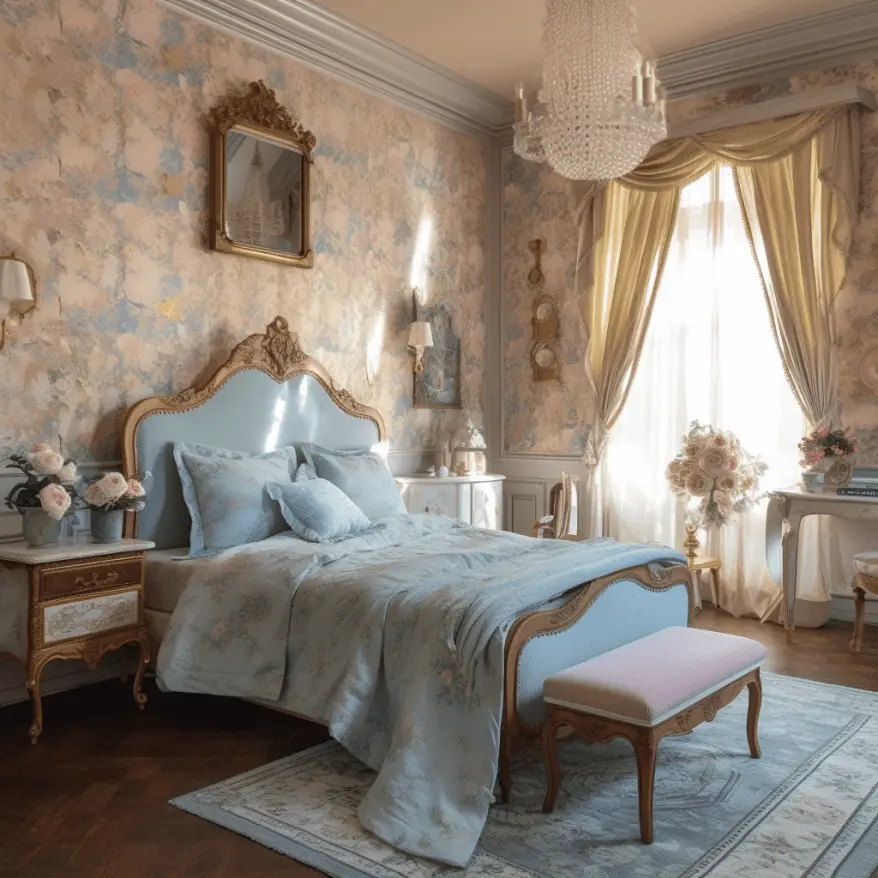
Furniture and Furnishings
French furniture is known for its ornate detailing, curved lines, and high-quality craftsmanship. From gilded mirrors and plush upholstered chairs to beautiful armoires and elaborate chandeliers, each piece adds a touch of elegance and luxury to the space.

Decorative Accents
Decorative accents like ornate sculptures, antique vases, and beautiful paintings are essential in French interior design. They provide a sense of history and culture, while also elevating the space’s visual appeal.
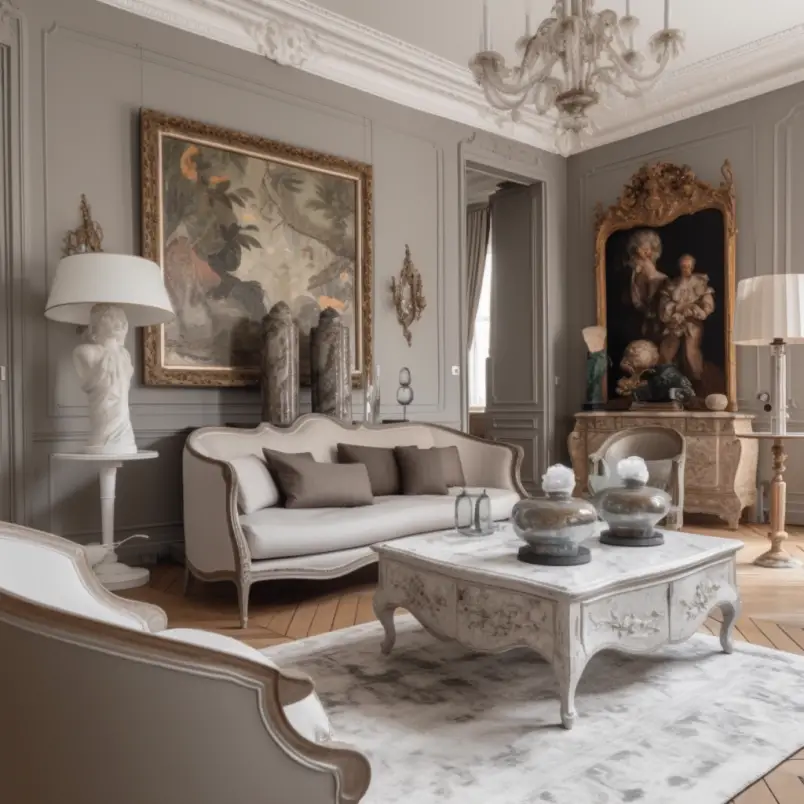
Lighting and Chandeliers
French design places a strong emphasis on lighting, particularly chandeliers. These statement pieces are not only functional but also act as beautiful focal points in a room, adding an air of opulence and sophistication.
Architectural Details
Architectural details such as crown molding, wainscoting, and ornate ceiling medallions contribute to the overall elegance of French interior design.
French Interior Design Styles
French Country
French Country style is characterized by its warmth, comfort, and rustic charm. Inspired by the rural French countryside, this design style features natural materials, weathered finishes, and a mix of patterns and textures.
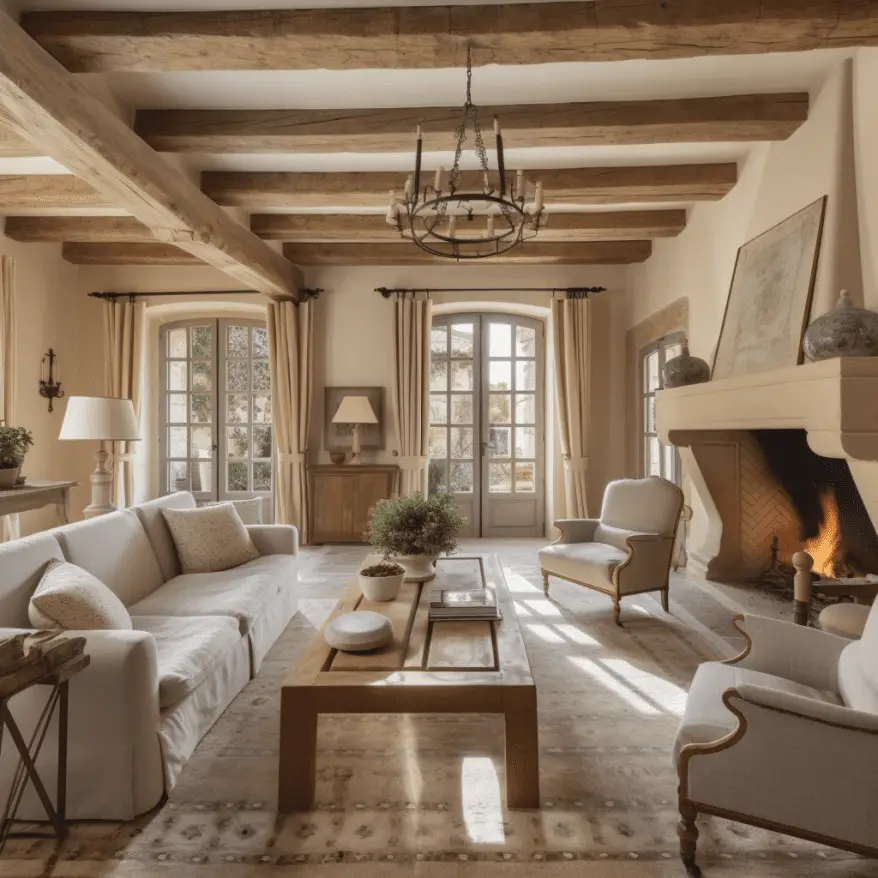
French Provincial
French Provincial design takes its cues from the more formal and ornate styles found in France’s provincial regions. This style often includes a mix of ornate furnishings, detailed carvings, and an emphasis on symmetry.
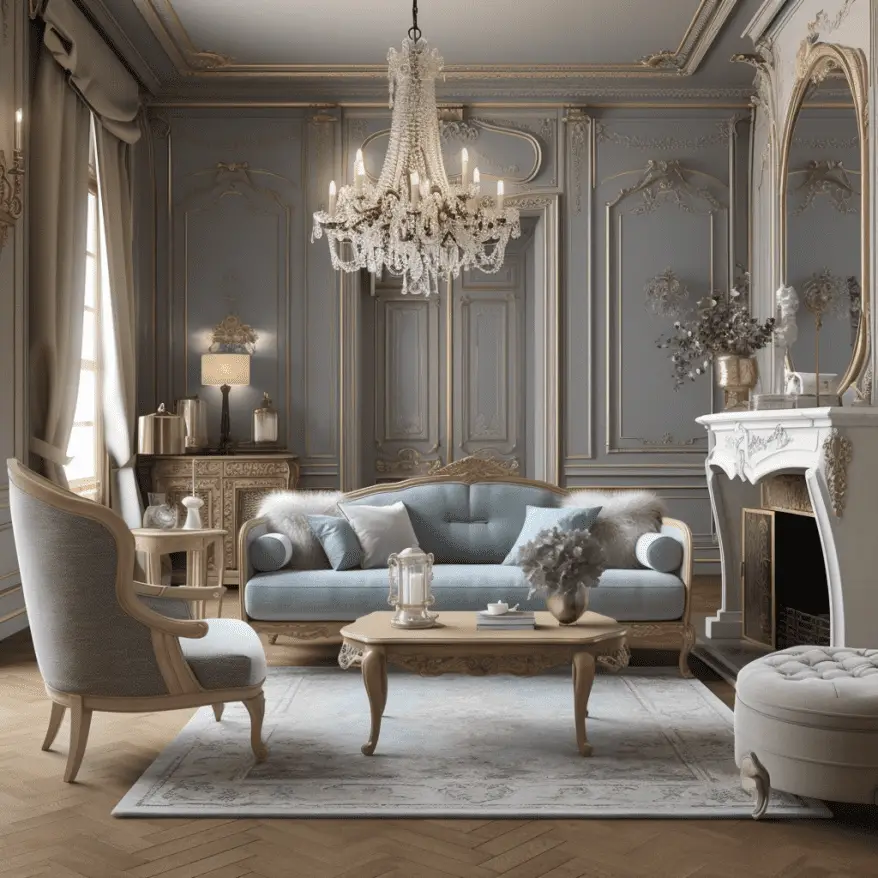
Parisian Chic
Parisian Chic style is all about effortless elegance, combining classic French design elements with a modern twist. This style often incorporates bold color choices, contemporary art, and a mix of old and new furnishings.
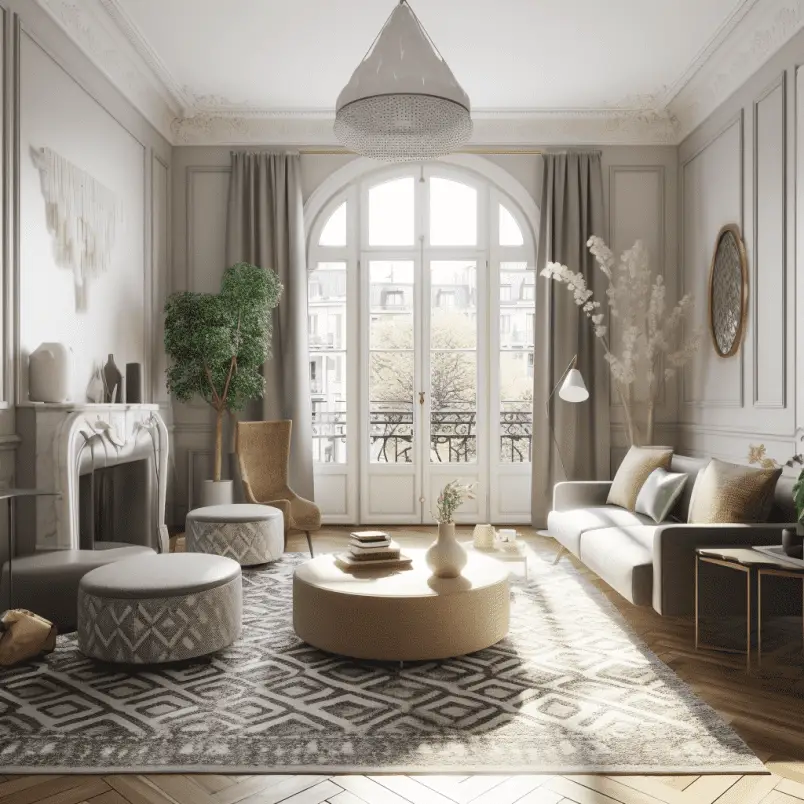
French Modernism
French Modernism focuses on clean lines, minimalist design, and the use of modern materials. This style still pays homage to traditional French design but incorporates a more contemporary and streamlined approach.
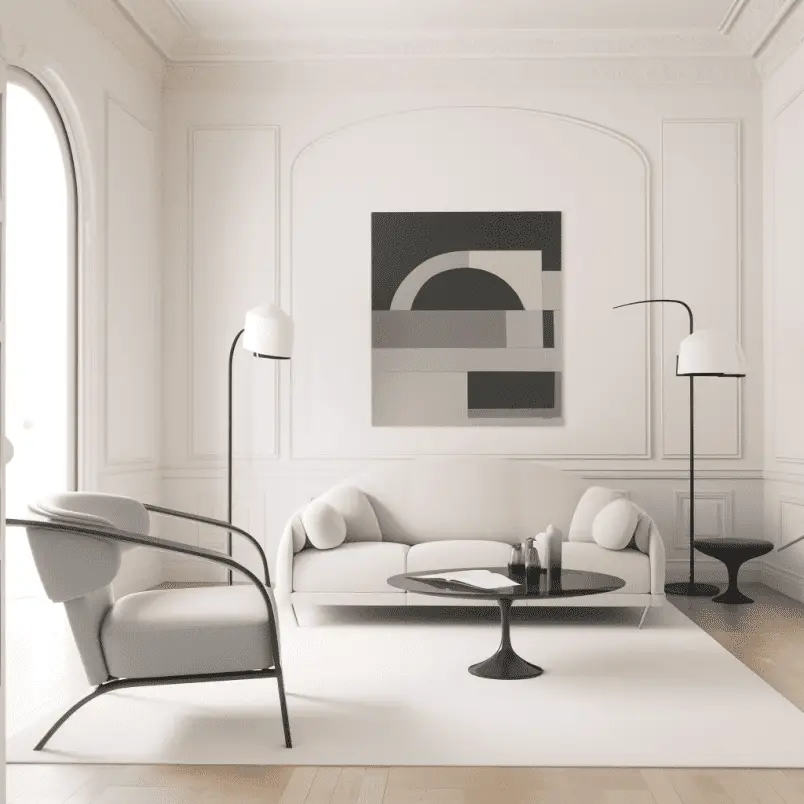
Incorporating French Design into Your Home
Start with a Neutral Base
Begin by selecting a neutral color palette for your walls, floors, and larger furnishings. This creates a timeless and elegant backdrop for the rest of your design.
Mix and Match
One of the charms of French interior design is its ability to blend different styles, textures, and patterns. Don’t be afraid to mix antique and modern pieces or combine various patterns and materials.
Add Vintage Elements
Incorporate vintage and antique elements to create a sense of history and character. Look for items such as antique mirrors, aged furniture, or heirloom accessories.
Embrace Ornamentation
Don’t shy away from adding ornate details and decorative accents. These elements are essential in creating a truly French-inspired space.
Incorporate Natural Elements
French design often emphasizes the use of natural materials like wood, stone, and linen. Be sure to include these elements to create a warm and inviting atmosphere.
Balance Functionality and Aesthetics
While French design is known for its beauty, it’s also important to prioritize functionality. Choose furniture and accessories that are both beautiful and practical for everyday use.
Pros and Cons of French interior design
French interior design, often referred to as French Country or Parisian style, is characterized by a mix of elegance, sophistication, and rustic charm. Like any design style, it has its pros and cons:
Pros:
- Timeless appeal: French interior design is a classic style that has stood the test of time, ensuring a long-lasting appeal for your home.
- Elegant and luxurious: With its ornate details, plush fabrics, and intricate patterns, French interior design exudes an air of luxury and elegance.
- Cozy and comfortable: Despite its elegant appearance, the style is also quite cozy, thanks to its warm color palettes and plush furnishings.
- Versatile: French interior design can be adapted to different budgets and home sizes, with a range of styles available, from the more lavish Parisian style to the simpler French Country style.
- Unique mix of old and new: French interior design seamlessly blends antique pieces with contemporary design elements, creating a distinct and visually appealing contrast.
Cons:
- Can be expensive: The luxurious nature of the style may require a significant investment in high-quality furniture, fabrics, and accessories.
- Requires careful planning: Successfully incorporating the various elements of French interior design requires thoughtful planning and attention to detail.
- Not suitable for minimalist design lovers: If you prefer a minimalist or ultra-modern aesthetic, French interior design may not align with your tastes, as it typically features ornate details and rich textures.
- May feel cluttered: With its mix of patterns, textures, and accessories, French interior design can feel busy or cluttered if not executed with care.
- Maintenance: Due to its intricate details and delicate fabrics, maintaining a French interior design can be more challenging and time-consuming compared to more minimalist styles.
Conclusion
French interior design is a timeless and sophisticated style that has captivated the world for centuries. By understanding its history, key elements, and various styles, you can successfully incorporate this elegant design aesthetic into your own home. Embrace the charm and elegance of French design, and let your home tell a story of its own.
FAQ
What is the French interior design style known for?
French interior design is known for its elegance, sophistication, and attention to detail. This style incorporates a mix of historical and contemporary elements, ornate detailing, and a focus on craftsmanship and quality materials.
What are the main elements of French interior design?
Some key elements of French interior design include a soft, muted color palette, intricate textures and patterns, ornate furniture and furnishings, decorative accents, statement lighting, and architectural details.
What are the different French interior design styles?
Some popular French interior design styles include French Country, French Provincial, Parisian Chic, and French Modernism. Each style has its unique characteristics, while still maintaining the essence of French design.
How can I incorporate French interior design into my home?
To incorporate French interior design into your home, start with a neutral base, mix and match styles and patterns, add vintage elements, embrace ornamentation, incorporate natural materials, and balance functionality with aesthetics.
Can I mix French interior design with other design styles?
Yes, you can mix French interior design with other design styles. French design is versatile and can be combined with other styles to create a unique and personalized space. Just be sure to maintain a balance between the elements, so the overall design remains cohesive and harmonious.
